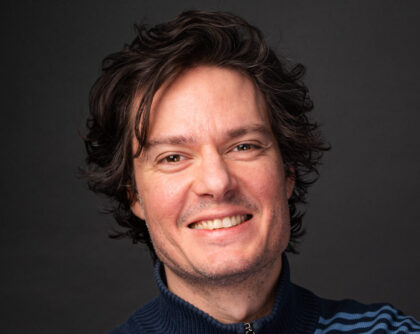Riccardo Comin
Research Interests
Professor Comin’s research explores the novel phases of matter that can be found in electronic solids with strong interactions, also known as quantum materials. In these systems, the interplay between different degrees of freedom – charge, spin, orbital, and lattice – leads to new flavors of emergent orders via the mechanism of electronic symmetry breaking. These phenomena include, among others: superconductivity, (anti)ferromagnetism, spin-density-waves, charge order, ferroelectricity, orbital order, and any combination thereof.
Our lab adopts a combination of synthesis, scattering, and spectroscopy to obtain a comprehensive picture of these intriguing phenomena. Resonant X-ray scattering and spectroscopy are used to reveal the emergent collective phases of electronic quantum matter. Optical probes (Raman scattering and optical polarimetry) are a complementary tool for studying electronic symmetry breaking in the same systems. We additionally uses photoelectron spectroscopy to measure the energy-momentum spectrum of single-particle excitations in strongly correlated electron systems and topological electronic materials.
The quantum materials we investigate are transition metal-based compounds hosting exotic phases of quantum matter that include high-temperature superconductivity, complex magnetism, and charge/spin-density-waves. We have historically studied single-crystalline bulk materials, and more recently have focused on 2D nanomaterials to explore emergent phenomena in the 2D quantum limit.
Biographic Sketch
Riccardo Comin joined MIT as an Assistant Professor of Physics in July 2016. He completed his undergraduate studies at the Universita’ degli Studi di Trieste in Italy, where he also obtained a M.Sc. in Physics in 2009. Later, he pursued doctoral studies at the University of British Columbia, earning a PhD in 2013, and subsequently, he has been an NSERC postdoctoral fellow at the University of Toronto. In 2019, he was named the Class of 1947 Career Development Associate Professor of Physics, and was promoted to associate professor in 2021.

Ultrasmall optical devices rewrite the rules of light manipulation
Nanophotonic devices developed at MIT are compact, efficient, reprogrammable, adaptive, and able to dynamically respond to external inputs.
Awards & Honors
- 2025 // Experimental Physics Investigator by the Gordon and Betty Moore Foundation
- 2025 // Friedrich Wilhelm Bessel Research Award from the Alexander von Humboldt Foundation in Germany in recognition of his “outstanding accomplishments in research and teaching”
- 2021 // DOE Office of Science Early Career Research Program Award
- 2020 // MIT Frank E. Perkins Award for Excellence in Graduate Advising
- 2019 // Appointed Class of 1947 Career Development Professor (MIT)
- 2018 // NSF CAREER Award
- 2018 // U.S. Air Force Young Investigator Research Program (AFOSR) Research Grant
- 2018 // Sloan Research Fellowship
- 2017 // CLS Young Investigator Award
- 2016 // Bryan R. Coles Prize
- 2015 // McMillan Award
- 2015 // John Charles Polanyi Prize in Physics
- 2014 // Fonda-Fasella Award
- 2014 // G. Bancroft Ph.D. Thesis Award
Key Publications
-
C. A. Occhialini, J. J. Sanchez, Q. Song, G. Fabbris, Y. Choi, J.-W. Kim, P. J. Ryan, R. Comin. Spontaneous orbital polarization in the nematic phase of FeSe. Nature Materials 22, 985 (2023), DOI: 10.1038/s41563-023-01585-2
-
L. G. Pimenta Martins, D. A. Ruiz-Tijerina, C. A. Occhialini, J.-H. Park, Q. Song, A.-Y. Lu, P. Venezuela, L. G. Cançado, M. S. C. Mazzoni, M. J. S. Matos, J. Kong, R. Comin. Pressure tuning of minibands in MoS2/WSe2 heterostructures revealed by moiré phonons. Nature Nanotechnology 18, 1147 (2023), DOI: 10.1038/s41565-023-01413-3
-
Q. Song, C. A. Occhialini, E. Ergeçen, B. Ilyas, D. Amoroso, P. Barone, J. Kapeghian, K. Watanabe, T. Taniguchi, A. S. Botana, S. Picozzi, N. Gedik, R. Comin. Evidence for a single-layer van der Waals multiferroic. Nature 602, 601 (2022). DOI: 10.1038/s41586-021-04337-x
-
M. Kang, S. Fang, J.-K. Kim, B. R. Ortiz, S. H. Ryu, J. Kim, J. Yoo, G. Sangiovanni, D. Di Sante, B.-G. Park, C. Jozwiak, A. Bostwick, E. Rotenberg, E. Kaxiras, S. D. Wilson, J.-H. Park, R. Comin. Twofold van Hove singularity and origin of charge order in topological kagome superconductor CsV3Sb5. Nature Physics 18, 301 (2022). DOI: 10.1038/s41567-021-01451-5
